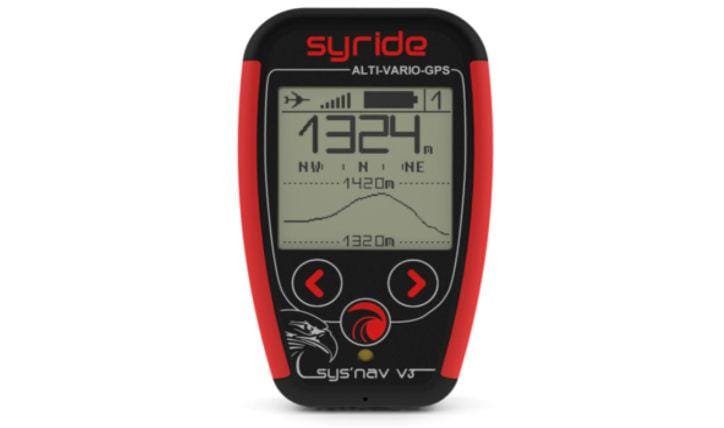
Is It Worth the Risk? How Safe Is Paragliding in 2025
Is It Worth the Risk? How Safe Is Paragliding in 2025 As you sit on the beach and look to

Flight instruments such as variometers, altimeters, and GPS can be great additions to your paragliding equipment. With the right devices, you can take longer flights, improve your climbs and glides, as well as, make better assessments.
Deciding on your flight instruments is not an easy choice. Whether you are a beginner or a pro, having the right tools is vital. The right devices for you will largely depend on your expertise and needs above anything else.
A variometer shows your climb and descent rates, which is useful information when flying. But, with so many options out there. When the area you fly isn’t anywhere near airspace, chances are, you won’t need state-of-the-art technology within your vario.
A vario-only is a great tool to pinpoint climbs and sinks. You can also find audible variometers, known as audio only various. On most cases, they don’t have GPS nor altimeter, and on some occasions, they might have no display.
It makes a noise every time you go up or down. Though they have limited features, they make it up by being extremely practical, lightweight, and affordable. They can also helpful log your flight hours.
Following are the two types of variometers.
With an alti-vario, you get all the information you would typically get from a variometer plus altitude details. Unlike a vario only, alti-varios have more features even with an entry level device, such as pressure sensor and altitude pressure calculations.
On top of the alti-vario features, you can add more functionalities to your device when you get an alti-vario GPS combo. It’s a great way to determine where you are at all times during the flight and keep track of your flight. Another advantage is to know your ground speed in case the wind increase you can still see your ground speed, and that can tell you if it’s still safe to fly or time to land.
When you look for flight instruments like this, you can get GPS devices that calculate wind speed and direction, helping you locate the best areas for lift and identify areas to avoid. However, like all electronic devices, GPS units have limitations and can occasionally fail or provide inaccurate readings. Remember that electronic instruments are tools to assist your decision-making – always rely on your flying experience and pilot judgment as your primary guide.

Choosing the right variometer for you means taking a lot of things into consideration. For example, you should think about the weight of the device, as well as its price and durability. Also, keep an eye out for these characteristics and functionalities, and where are you going to set it up (leg , risers, cockpit?):
One of the most critical aspects of any flight instrument is its ease-of-use. Since you’ll be using it while flying, the devices cannot demand much of your attention. You need to be able to access information quickly and effectively.
Whichever variometer you choose, it must be user-friendly. Even when it comes to your computer setup, a vario should be an asset to your flights, not a hindrance. When you choose a variometer, try its interface first and see how you get along with it. Tip: if you are a beginner chose a simple one so it doesn’t become a distraction.
A feature that can make for a great vario is within the audio controls. Make sure you choose a variometer that allows you to adjust the volume and mute it. You can take it one step further and get a device that lets you select the tunes.
Before you choose your variometer, determine what features, functionalities, and controls are essential to your flights. It will allow you to make the right decision for your current piloting skills. You can always upgrade later.
While not absolutely essential for your first few flights, a basic variometer becomes invaluable once you start thermal flying and cross-country flights. It helps you identify lift and sink, making your flights more efficient and safer. Many instructors recommend getting at least a simple audio vario after completing your basic training.
Basic audio-only variometers start around $100-200, while simple audio-visual units range from $200-400. Mid-range varios with additional features like altitude and flight time cost $400-800. High-end GPS combo units can range from $800-2000+. Consider your flying goals and budget – a reliable basic unit is better than an expensive one you can’t afford to replace if damaged.
This depends on your flying goals and budget. If you plan to do cross-country flying or want detailed flight tracking, a GPS combo is worth the investment. For local thermal flying and basic altitude monitoring, a simple audio-visual vario will suffice and costs significantly less.
Audio feedback is crucial because it allows you to keep your eyes on the sky and your surroundings rather than constantly looking at the display. Different tones indicate lift and sink rates, enabling you to react quickly to changing conditions while maintaining situational awareness.
While smartphone apps can provide basic variometer functions, they’re not recommended as your primary instrument. Phones have slower response times, shorter battery life in cold conditions, and aren’t designed for the vibrations and weather exposure of paragliding. Use smartphone apps as backup only – invest in a proper variometer for reliable, real-time feedback during flight.

Is It Worth the Risk? How Safe Is Paragliding in 2025 As you sit on the beach and look to

How Much Does a Paraglider Cost? A Realistic Breakdown for Every Budget Are you dreaming of taking off with nothing

Choosing the Right Reserve Parachute: A Comprehensive Guide Paragliding is an absolutely amazing experience! It is an exhilarating sport that
No account yet?
Create an Account